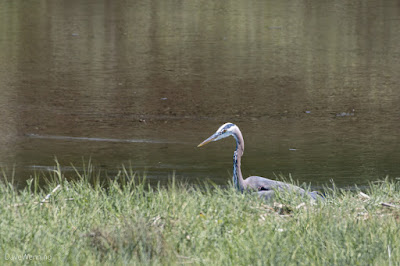Black Oystercatchers Nesting

I consider the pair of Black Oystercatchers (Haematopus bachmani) that make their home in the Kukutali Preserve to be friends. I have been watching them since 2011 , the first time I visited. I'm fairly certain I have been seeing the same birds every year. According to Seattle Audubon , "Males and females appear to form long-term pair bonds, and the pair returns to the same territory year after year." I was in the Preserve yesterday and found them in their usual spot, where they appear to be nesting now. They seem to nest later in the season than other birds. I'm not certain, but perhaps it's a shorebird thing. Land birds are pretty much done with that now, or even getting ready for a second brood. Oystercatchers lay their eggs in a simple scrape in the rocks, above the high tide line, according to the iBird app . While I walked up the beach to the west, I pointed the camera at some gulls that were still quite a distance away. ...


